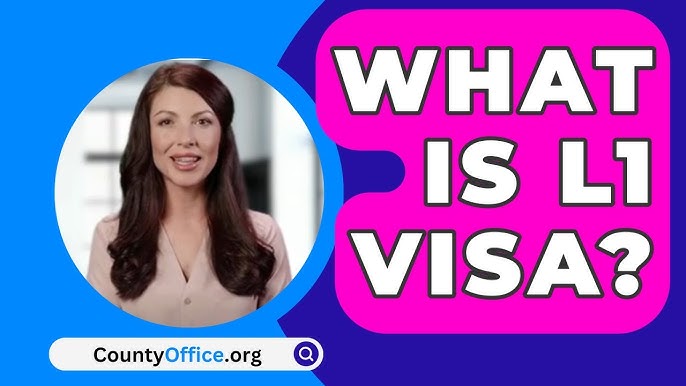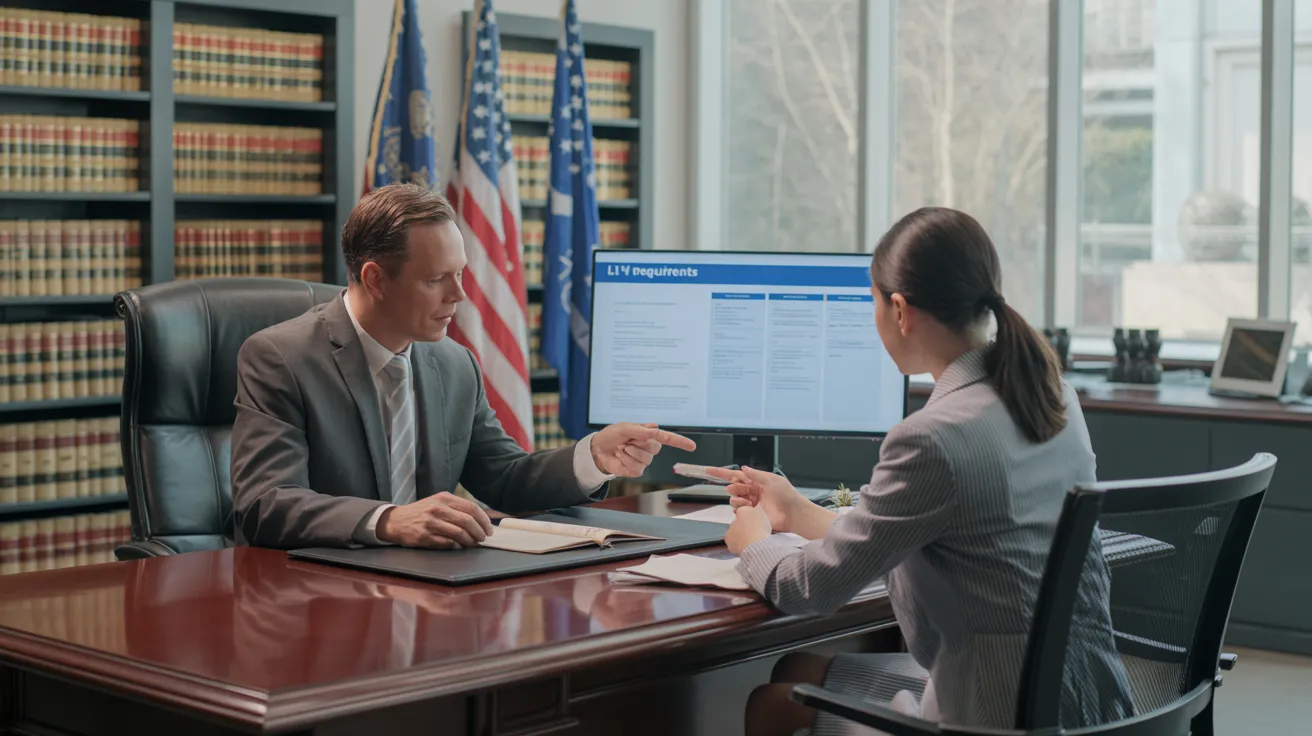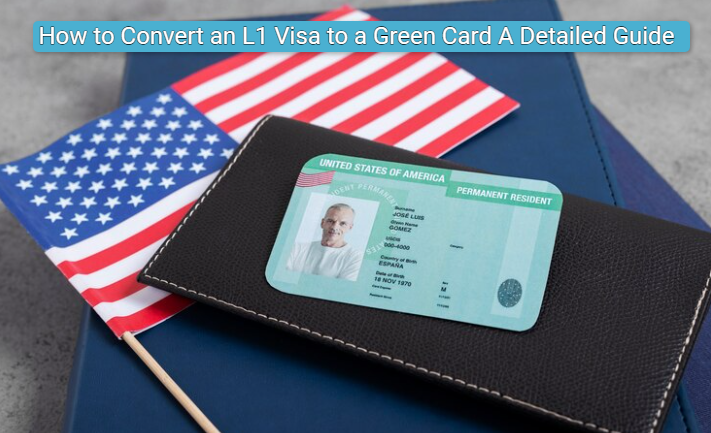Opening Opportunities: A Comprehensive Overview to the L1 Visa Process
The L1 visa process presents an important path for international companies seeking to move crucial staff members across boundaries. Recognizing the nuances of qualification standards, the distinctions between L-1A and L-1B visas, and the details of the application process can significantly impact a candidate's success. However, navigating this complicated landscape is not without its challenges, and mindful interest to paperwork and employer sponsorship is important. As we explore the key elements of this procedure, the methods for getting rid of prospective challenges will become apparent, revealing exactly how notified preparation can open a world of opportunities.
Comprehending the L1 Visa
Recognizing the L1 visa entails identifying its value as an important device for international companies looking for to transfer experienced employees between global offices. This non-immigrant visa category facilitates the movement of execs, managers, and specialized expertise workers to the United States, thus enabling organizations to preserve operational continuity and harness international talent efficiently. The L1 visa is separated into 2 key categories: L-1A for managers and execs, and L-1B for employees possessing specialized knowledge.The L1 visa serves a vital duty in boosting a firm's competitive side in the worldwide industry - L1 Visa. By allowing firms to move their vital personnel, companies can ensure that crucial projects are handled by qualified individuals that are already familiar with the firm's society and functional processes. This internal transfer mechanism not just fosters knowledge sharing but also advertises innovation and partnership throughout borders.Moreover, the L1 visa is usually preferred for its reasonably simple application process compared to various other visa classifications, as it enables for twin intent, allowing owners to pursue long-term residency while on a temporary job visa. This feature makes the L1 visa specifically appealing for both companies and employees, as it simplifies the path for experienced specialists to develop long-lasting residency in the USA
Eligibility Standards
Eligibility for the L1 visa rests on several vital criteria that ensure both the staff member and the employer satisfy specific certifications. This non-immigrant visa is made for international companies to transfer staff members from consular services to united state counterparts.Firstly, the company has to be a certifying company, which includes a moms and dad firm, branch, associate, or subsidiary of a united state service. The business needs to have been doing service for a minimum of one year both in the U.S. and abroad. This assures that the company has adequate operational stability and a legit presence.Secondly, the employee should hold a managerial, exec, or specialized understanding placement. For L1A visas, the candidate must demonstrate supervisory or executive certifications, while L1B visas concentrate on specialized knowledge pertaining to the organization's items, solutions, or processes. In addition, the employee should have helped the foreign entity for at least one continuous year within the last three years prior to their application.Lastly, the employee's role in the united state must line up with their previous setting, making certain that their skills and knowledge are leveraged for the company's advantage.
Kinds Of L1 Visas
The L1 visa classification makes up 2 primary types developed to assist in the transfer of staff members within multinational firms: the L1A visa for supervisors and executives, and the L1B visa for staff members with specialized understanding. Each type serves unique objectives and has certain eligibility criteria.The L1A visa is tailored for individuals that hold managerial or executive settings within a business. This visa makes it possible for high-level employees to move to an U.S. branch, subsidiary, or affiliate of the very same company. Candidates for the L1A visa need to show that they have actually been employed in a supervisory or executive ability for at the very least one continuous year within the past three years before their application. Additionally, this visa provides a much longer duration of keep, initially approved for 3 years, with the opportunity of expansions for as much as seven years.In contrast, the L1B visa is intended for professionals with specialized expertise pertaining to the firm's products, services, or processes. To certify, candidates need to prove that their expertise is vital to the organization and that they have functioned for a minimum of one continuous year within the last 3 years in a role that required this specialized knowledge. The L1B visa is originally provided for 3 years, with expansions available for approximately 5 years.Both visa types are necessary for business looking for to enhance their global operations by leveraging competent personnel, thereby advertising advancement and efficiency within the united state market.
Application Process
Guiding via the L1 copyright procedure entails numerous vital actions that must be carefully followed to assure an effective outcome. The procedure starts with the U.S. employer, that must first establish qualification by showing a certifying relationship with the international entity and confirming that the worker satisfies the particular requirements for the L1 visa group being sought.Once eligibility is verified, the company launches the procedure by submitting Kind I-129, the Request for a Nonimmigrant Employee, with the United State Citizenship and Immigration Solutions (USCIS) This form should be come with by a comprehensive description of the job duties to be carried out, the business framework of both the united state and foreign entities, and the worker's credentials. It's essential to confirm that all information is exact and total, as noninclusions or mistakes can cause delays or denials.Upon authorization of the I-129 request, the next action includes the employee requesting the L1 visa at a united state embassy or consular office in their home country. This stage needs the conclusion of Kind DS-160, the Online Nonimmigrant copyright, and setting up a meeting. Throughout the interview, the candidate must offer proof supporting their credentials and the employer's petition.After the visa is given, the employee can enter the United States to function in the designated role. Overall, cautious preparation and adherence to each step of the application procedure are necessary for an effective L1 visa end result.
Needed Paperwork

Important Types Needed
Steering the L1 Visa procedure calls for careful attention to the vital types and documents necessary for an effective application. The key form required is the Form I-129, Request for a Nonimmigrant Employee, which should be finished and sent by the united state employer. This type describes the information of the work offer and the qualifications of the staff member looking for the L1 Visa.Alongside Kind I-129, the candidate will certainly require to complete Form I-539 if coming with relative are also looking for visas. Furthermore, the employer must supply evidence of the certifying relationship in between the united state entity and the international entity, frequently necessitating the entry of business records such as posts of consolidation or financial statements.Moreover, it is necessary to include the L Classification Supplement to Type I-129, which defines the kind of L Visa being requested-- either L-1A for supervisors and executives or L-1B for employees with specialized understanding. Candidates ought to assure that all types are signed and dated suitably, as insufficient entries can lead to delays or rejections. Correctly assembling these vital types lays the structure for a smoother L1 copyright process.

Supporting Proof Needs
Supporting paperwork is necessary for an effective L1 copyright, as it confirms the cases made in the petition. Applicants need to provide a series of records to show eligibility for the visa, which is classified right into two main types: proof of the certifying relationship between the united state and foreign entities and evidence of the applicant's qualifications.To establish the partnership, applicants ought to send documents such as company business graphes, financial declarations, and evidence of possession. These files confirm that the international company has a qualifying partnership with the U.S. employer, whether as a moms and dad business, subsidiary, branch, or affiliate.For the candidate's credentials, crucial records include an in-depth work letter from the international company, outlining the candidate's job title, tasks, and period of employment. In addition, instructional credentials, such as degrees and diplomas, must be offered to confirm the candidate's experience in the appropriate area.
Company Sponsorship Papers

Typical Challenges
Maneuvering the L1 visa procedure provides numerous usual difficulties that candidates need to know. Trick problems typically include stringent documents requirements, potential delays in handling times, and the requirement for strict lawful compliance. Comprehending these barriers can assist candidates much better prepare and mitigate risks during their copyright trip.
Documents Needs
The L1 copyright procedure usually offers substantial challenges connected to documents needs. Candidates must give extensive paperwork to establish eligibility, which can cause complication and prospective hold-ups. Key files include evidence of a certifying connection between the united state and foreign employer, evidence of the applicant's employment background, and thorough information concerning the work role in the U.S.One typical challenge is gathering adequate proof to demonstrate the nature of the certifying relationship. Business usually battle to present clear organizational graphes or financial declarations that highlight the link in between the entities. Additionally, making certain that letters of assistance from employers accurately reflect the applicant's task duties and credentials is vital, as unclear summaries can cause denials.Another concern arises from the requirement for thorough task summaries that line up with the L1 visa groups. Candidates should express not only their current role yet likewise their managerial or customized knowledge duties plainly. This demands a detailed understanding of both the applicant's placement and the regulatory language used in L1 applications.
Processing Time Delays
Experiencing hold-ups in handling times is an usual challenge encountered by L1 visa applicants, frequently causing frustration and unpredictability. A number of aspects add to these delays, consisting of high application quantities, increased scrutiny of applications, and administrative stockpiles within the united state Citizenship and Migration Services (USCIS) Applicants might locate that processing times can differ considerably depending on the solution facility managing their application, as each center has its own workload and effectiveness levels. Furthermore, the complexity of the applicant's case, such as the demand for comprehensive documents or explanation, can better prolong wait times.In some instances, issues associated with the applicant's present immigration condition or previous visa history might also result in extra delays, as USCIS may require additional review or details. It is necessary for prospects to continue to be proactive during this duration, maintaining open communication with their employers and legal representatives to deal with any type of possible issues promptly.Understanding these handling time difficulties can aid L1 visa candidates prepare for feasible delays and minimize the effect on their change and job strategies. Patience and persistance are essential merits in maneuvering this complex process.
Legal Compliance Issues
Many L1 visa applicants encounter lawful conformity concerns that can complicate their journey toward getting the visa. Understanding and adhering to the particular laws established by the U.S. Citizenship and Migration Services (USCIS) is vital. Common difficulties include demonstrating the certifying connection in between the foreign and united state employers, as well as proving that the candidate has the requisite specialized expertise or supervisory capacity.Additionally, applicants need to give detailed documentation outlining their task duties, business framework, and economic feasibility of the U.S. entity. Insufficient or inaccurate paperwork can result in hold-ups and even denials. Companies need to likewise guarantee that they conform with labor legislations, including wage and functioning condition criteria, which can affect visa eligibility.Another usual concern entails keeping compliance with the regards to the visa once granted. Modifications in work condition, job responsibilities, or business framework can demand changes to the visa, which if not attended to immediately can lead to legal difficulties. Because of this, remaining informed about conformity requirements and seeking lawful advice when essential is necessary to navigate the intricacies of the L1 visa process successfully.
Tips for Success
Success in the L1 copyright procedure typically pivots on precise preparation and focus to information. To improve your possibilities of approval, start by completely comprehending the qualification requirements for both the L1A and L1B visa categories. Review whether your setting at the business certifies as supervisory, executive, or specialized expertise, as this categorization especially affects your application.Next, collect extensive documentation that confirms your insurance claims. This consists of business charts, thorough job summaries, and evidence of the business's functional framework. Clear and succinct evidence of the certifying partnership in between the united state entity and the foreign entity is vital. Confirm that all records are organized realistically and offered in a specialist fashion, as this shows your commitment and severity regarding the application.Engage the services of a seasoned immigration lawyer that specializes in L1 visas. Their experience can prove invaluable, directing you via facility laws and ensuring that all documents abides by current regulations. In addition, prepare for the interview by practicing solution to usual concerns and being ready to discuss your function and payments to the firm comprehensive.
Regularly Asked Concerns
Can Family Members Accompany the L1 Visa Owner?
Yes, member of the family of L1 visa owners, including partners and unmarried kids under 21, can come with the key visa owner. They may also get L2 visas, which allow them to stay in the United States.
The Length Of Time Can I Stay on an L1 Visa?
The L1 visa enables initial keeps of as much as 3 years, with the opportunity of extension. L1A visa holders might remain for an optimum of seven years, while L1B visa holders can remain for 5 years.
Can L1 Visa Owners Apply for an Eco-friendly Card?
Yes, L1 visa owners can make an application for a permit. L1 Visa. They may seek irreversible residency via employment-based categories, generally calling for sponsorship from their company, supplied they meet the required certifications and documentation needs
What Occurs if My L1 copyright Is Rejected?
If your L1 copyright is denied, you may get a notification detailing the reasons for denial. You can seek to appeal the decision, reapply, or explore alternate visa alternatives based on your circumstances.
Exist Any Type Of Travel Limitations With an L1 Visa?
An L1 visa generally enables for global travel; nevertheless, re-entry to the U. L1 Visa.S. rests upon preserving legitimate status. Travelers must guarantee conformity with visa conditions to avoid issues upon return
Conclusion
